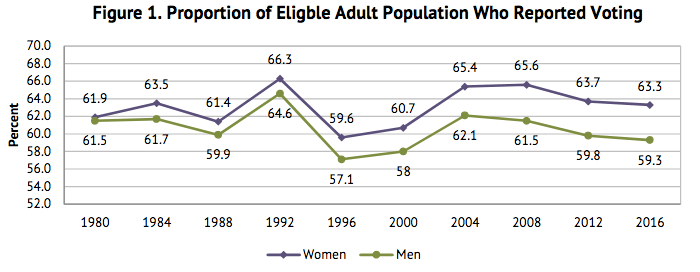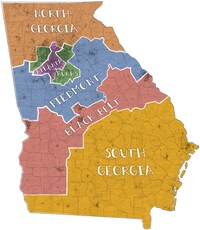
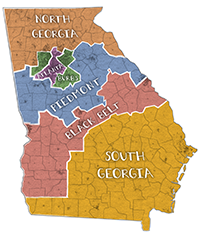
Eighth in a series on swing states
When they sifted through the wreckage of the 2016 election, and reckoned with their losses in the Midwest, Democrats were surprised by what they found in Georgia. The state had not voted for a Democratic president since 1992, and it delivered 16 electoral votes for Donald Trump, continuing the pattern.
But something had happened in the suburbs. In defeat, Hillary Clinton had won more raw votes out of Georgia than any Democratic nominee in history, and she had carried the GOP’s longtime stronghold — the fast-growing counties just outside of Atlanta. Nearly half of the state’s votes came from the Atlanta metro region, and the modern GOP has never struggled so much there.
Even in triumph, Republicans began to worry. Once-conservative Cobb County elected a new GOP chair on the promise to “Make Cobb Red Again.” A 2017 special election for a House seat in the county went down to the wire. One year later, Democrats flipped that seat and nearly won another in Atlanta’s suburbs, as Democratic nominee Stacey Abrams lost the closest race for governor in 24 years.
“Democrats, let’s do better,” Abrams wrote in a 2019 memo to party leaders. “Any decision less than full investment in Georgia would amount to strategic malpractice.”
Have Democrats put everything they could into the state since then? Arguably not — but that’s changing. Joe Biden’s cash-flush campaign has bought ads in the state, and Abrams’s group Fair Fight Georgia has registered hundreds of thousands of voters and pumped up requests for absentee ballots. The Trump campaign has not taken the state for granted, with the president dropping into Atlanta last week to roll out his “platinum plan” for Black Americans.
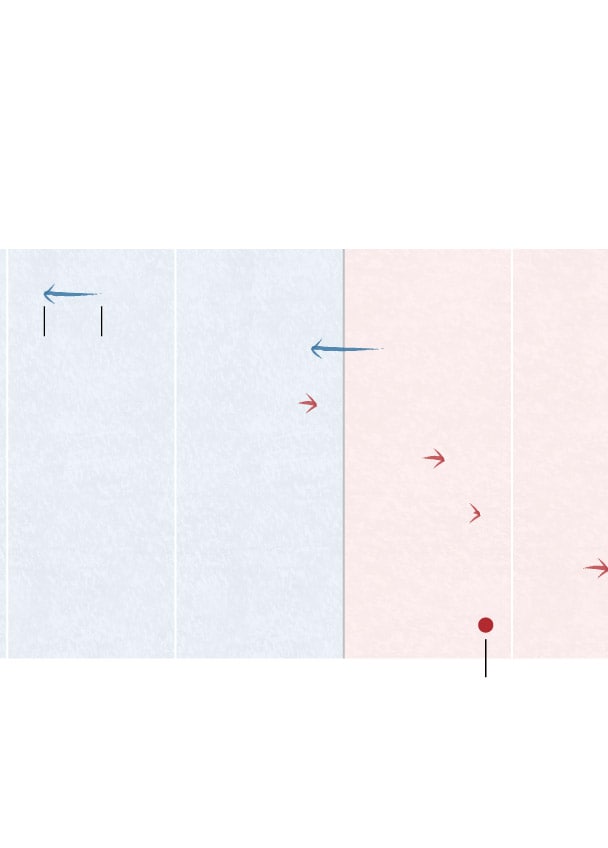
Georgia’s shift from 2012 to 2016
Clinton was the first Democrat since Carter to win Cobb and Gwinnett counties, suburban GOP strongholds.
GOP won
by 250K
Dem. won by
500K votes
Atlanta
Atlanta Suburbs
2016
margin
Black Belt
South Georgia
Piedmont
North Georgia
Statewide 2016 margin
Democrats added to those gains in 2018, but Republicans held the state again with landslide support from north and south of Atlanta.
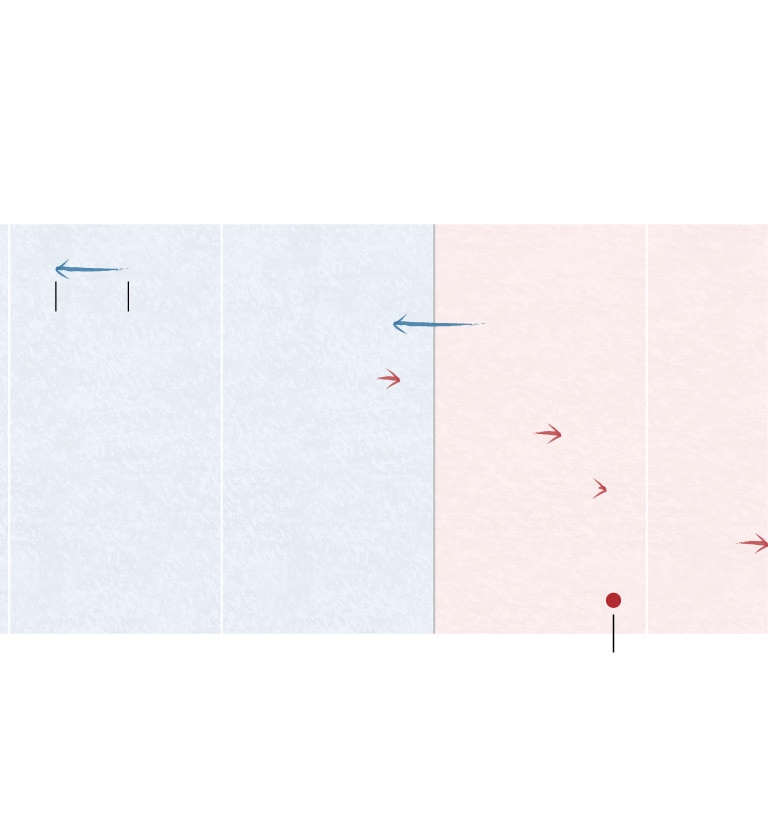
How Georgia shifted from 2012 to 2016
Clinton was the first Democrat since Carter to win Cobb and Gwinnett counties, suburban GOP strongholds.
GOP won
by 250K
Dem. won by
500K votes
Atlanta
Atlanta Suburbs
2016
margin
Black Belt
South Georgia
Piedmont
North Georgia
Statewide 2016 margin
Democrats added to those gains in 2018, but Republicans held the state again with landslide support from north and south of Atlanta.

How Georgia shifted from 2012 to 2016
Clinton was the first Democrat since Carter to win Cobb and Gwinnett counties, suburban Republican strongholds.
Dem. won by
500K votes
GOP won
by 250K
Atlanta
Atlanta Suburbs
2016
margin
Black Belt
South Georgia
Piedmont
North Georgia
Statewide 2016 margin
Democrats added to those gains in 2018, but Republicans held the state again with landslide support from north and south of Atlanta.
Like the rest of the Deep South, Georgia was dominated by conservative Democrats for more than a century, from the end of Reconstruction to the beginning of Ronald Reagan’s presidency. Democrats held both houses of Georgia’s legislature until 2002 — then, in a single election, lost both, kicking off a decade of decline. Conservative Democrats below the “Gnat Line,” shorthand for where the state’s Piedmont region ends and its hotter plains begin, bolted the party and never came back.
The math only changed as the electorate got larger and more diverse. In 2004, when Democrats made no effort in the state, 70 percent of all voters were White, according to exit polls. In 2016, the White share of the electorate fell to 60 percent and Democrats won the state’s suburban Cobb and Gwinnett counties, for the first time since Jimmy Carter won the presidency. They added to those gains in 2018, but Republicans held out with landslide support from White voters north and south of Atlanta.
Republicans are slightly more nervous about those suburbs, but in a war of attrition, they have more votes to spare. We’ve split Georgia into six political “states,” starting with Atlanta, where Republicans were struggling before Trump’s presidency and have lost ground since. The Atlanta suburbs, six counties with interstate access to the city, have become the state’s most competitive region. North Georgia, the Piedmont and South Georgia are solidly Republican, and the party may have some more votes to turn out there. The Black Belt, with fewer votes than these other regions, always backs Democrats — but a turnout difference of just 20,000 or 30,000 votes, with rural Black voters being enthusiastic to cast ballots and confident those ballots will count, could swing a close statewide election.
This is the eighth in a series breaking down the key swing states of 2020, showing how electoral trends played out over the past few years and where the shift in votes really mattered. See all 50 states here.
Atlanta
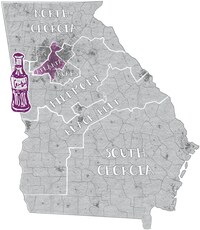
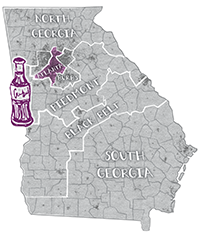
The “capital of the south” welcomes tens of thousands of new residents every year, and they have only made Atlanta bluer. In 2016, Clinton won more votes in the three core counties of metro Atlanta than any Democrat in history. Donald Trump won fewer votes here than any Republican nominee in 20 years. Months later, he alienated Atlanta’s Black voters further by insulting Rep. John Lewis (D), insisting that the Civil Rights icon’s district was in “horrible shape” and “infested” with crime.
Lewis died this year, and Atlanta continues to get bluer. DeKalb County is one of the few majority-Black places in the country where turnout in 2016 was markedly higher than 2012, and in 2018, Abrams turned out 10,000 more voters than Clinton had — an unheard-of surge from a presidential year to a midterm. Republicans still run strong in the north end of Fulton County, around cities like Roswell — just not as strong as they once did, as those cities have grown more diverse and less conservative.
2016 vote totals
- Donald Trump: 181,710
- Hillary Clinton: 626,686
Counties included: Clayton, DeKalb, Fulton
Atlanta Burbs
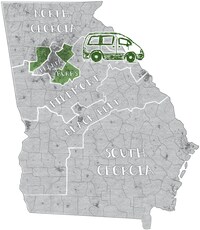
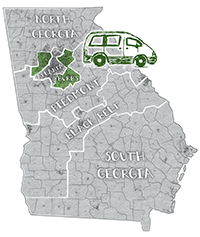
The exurbs of Atlanta were built by segregation and “White flight.” The city’s geographic expansion halted in the 1960s, when such places as Sandy Springs rejected annexation; nearby Marietta became a bulwark of White conservative politics, starting Newt Gingrich on his journey to becoming House speaker.
But a steady stream of immigrants and escapees from other states has turned the region blue, with Cobb County backing Clinton by two points, then supporting Abrams by nine points. A region that gave Mitt Romney a 60,000-vote victory in 2012 gave Clinton a 48,000-vote margin, then went more solidly for Abrams and Democratic candidates, with the party picking up 11 seats in the state legislature largely through gains in these suburbs.
2016 vote totals
- Donald Trump: 404,885
- Hillary Clinton: 452,450
Counties included: Cobb, Douglas, Gwinnett, Henry, Newton, Rockdale
North Georgia
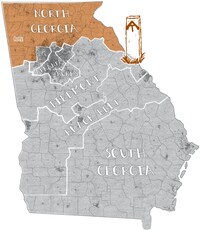
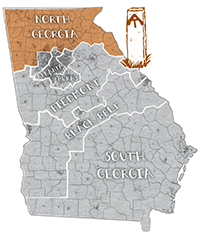
The reddest part of Georgia has also been making the most news lately — conservative activist and conspiracy theorist Marjorie Taylor Greene won the Republican nomination to represent the 14th Congressional District, and the party threw up its hands. Every county in the region backed Trump in 2016, with the GOP nominee carrying all but three precincts, in the cities of Dalton and Rome. And Trump added more than 50,000 votes to Romney’s 2012 total, finding White voters without college degrees who had been sitting out elections.
Democrats added some votes, too, because there was not much room to fall. In the past few decades, only Zell Miller, who’d been born in Towns County, was able to win votes here for Democrats. The GOP now clears 80 percent of the vote in most of northwestern and northeastern Georgia, and Gov. Brian Kemp’s 2018 win came after he did what looked unlikely — he made it even redder.
2016 vote totals
- Donald Trump: 549,131
- Hillary Clinton: 156,310
Counties included: Banks, Bartow, Catoosa, Chattooga, Cherokee, Dade, Dawson, Elbert, Fannin, Floyd, Forsyth, Franklin, Gilmer, Gordon, Habersham, Hall, Haralson, Hart, Lumpkin, Murray, Paulding, Pickens, Polk, Rabun, Stephens, Towns, Union, Walker, White, Whitfield
Black Belt
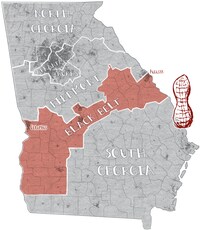
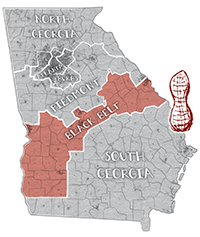
Georgia, as with much of the Deep South, was built on the backs of enslaved Black people, and the legacy of the cotton trade stretches across the middle of the state. Fifteen counties in the region have majority-Black populations and have voted reliably for Democrats even as Whiter counties have shifted toward the GOP. They’re essential to Biden’s chances in the state, but no nominee has maximized turnout here since Barack Obama’s two campaigns.
From 2012 to 2016, the falloff was worth around 25,000 votes. The region’s biggest cities, Augusta, Columbus and Macon, got bluer, while Democratic margins everywhere else slightly declined. Four small counties also flipped from narrowly blue to narrowly red — Dooly, Peach, Quitman, Twiggs — as Black turnout declined, and they stayed red in 2018, even as Democratic turnout grew in urban areas. But like the Black Belt in other parts of the South, the region is slowly losing population, capping the number of new votes either party can win.
2016 vote totals
- Donald Trump: 194,353
- Hillary Clinton: 235,000
Counties included: Baker, Bibb, Burke, Calhoun, Chattahoochee, Clay, Dooly, Dougherty, Early, Glascock, Hancock, Houston, Jefferson, Lee, Macon, Marion, McDuffie, Miller, Mitchell, Muscogee, Peach, Quitman, Randolph, Richmond, Schley, Stewart, Sumter, Talbot, Taliaferro, Taylor, Terrell, Twiggs, Warren, Washington, Webster, Wilkinson
Piedmont
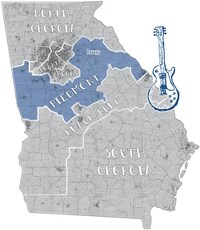
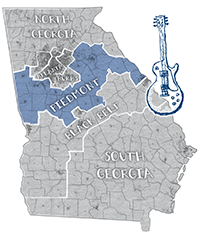
Outside of Atlanta, central Georgia is mostly rural and overwhelmingly Republican, with a few dots of blue. The University of Georgia helped make Athens one of the most liberal parts of the state, if not as liberal (or as vote-rich) as similar college towns in the Midwest and Northeast, and the places closest to Atlanta moved marginally toward the Democrats.
The rest of the region is overwhelmingly White and solidly Republican, with the party gaining strength here in every election since 2010. (Obama’s 2008 bid made a few inroads here, but only in that election.) Across these 30 counties, Trump ran roughly 17,000 votes ahead of Romney; Clinton ran roughly 7,000 votes ahead of Obama. Winning here by a smaller margin, over a candidate who has not inherited all of Clinton’s problems with White working-class voters, could hurt the GOP.
2016 vote totals
- Donald Trump: 399,873
- Hillary Clinton: 197,567
Counties included: Baldwin, Barrow, Butts, Carroll, Clarke, Columbia, Coweta, Crawford, Fayette, Greene, Harris, Heard, Jackson, Jasper, Jones, Lamar, Lincoln, Madison, Meriwether, Monroe, Morgan, Oconee, Oglethorpe, Pike, Putnam, Spalding, Troup, Upson, Walton, Wilkes
South Georgia
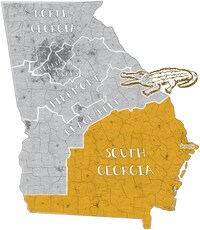
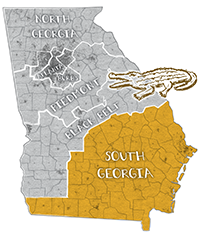
There are two very different political climates south of the Gnat Line; most voters live in the one that’s shifting right. Outside of Savannah and its suburbs in Bryan County, every single part of the region voted by a bigger margin for Trump than for Romney; tiny Brantley County gave Trump a 78-point margin, one of his biggest in the entire state. Across all six of our “states,” this is the only one where Clinton ran behind Obama, with Trump expanding the GOP’s margin from nearly 140,000 votes to more than 170,000 votes.
Those trends didn’t change in 2018, and strong turnout here helped Republicans cross 50 percent of the statewide vote, even though the population of southwestern Georgia has been shrinking. Like the Piedmont, this is a deep red region with a few dashes of blue in small cities; Democrats won the city of Valdosta, for example, while nearby Moody Air Force Base is a Republican stronghold. A good night for Republicans will involve landslide margins out of Georgia’s southern counties; an upset by Democrats will require enough gains elsewhere to make that irrelevant.
2016 vote totals
- Donald Trump: 359,062
- Hillary Clinton: 209,990
Counties included: Appling, Atkinson, Bacon, Ben Hill, Berrien, Bleckley, Brantley, Brooks, Bryan, Bulloch, Camden, Candler, Charlton, Chatham, Clinch, Coffee, Colquitt, Cook, Crisp, Decatur, Dodge, Echols, Effingham, Emanuel, Evans, Glynn, Grady, Irwin, Jeff Davis, Jenkins, Johnson, Lanier, Laurens, Liberty, Long, Lowndes, McIntosh, Montgomery, Pierce, Pulaski, Screven, Seminole, Tattnall, Telfair, Thomas, Tift, Toombs, Treutlen, Turner, Ware, Wayne, Wheeler, Wilcox, Worth

